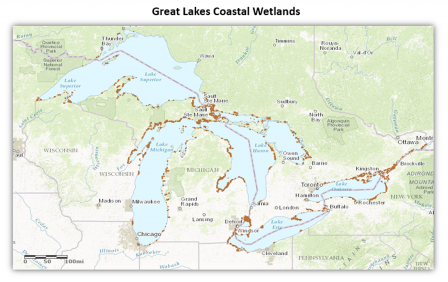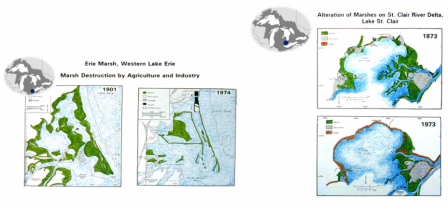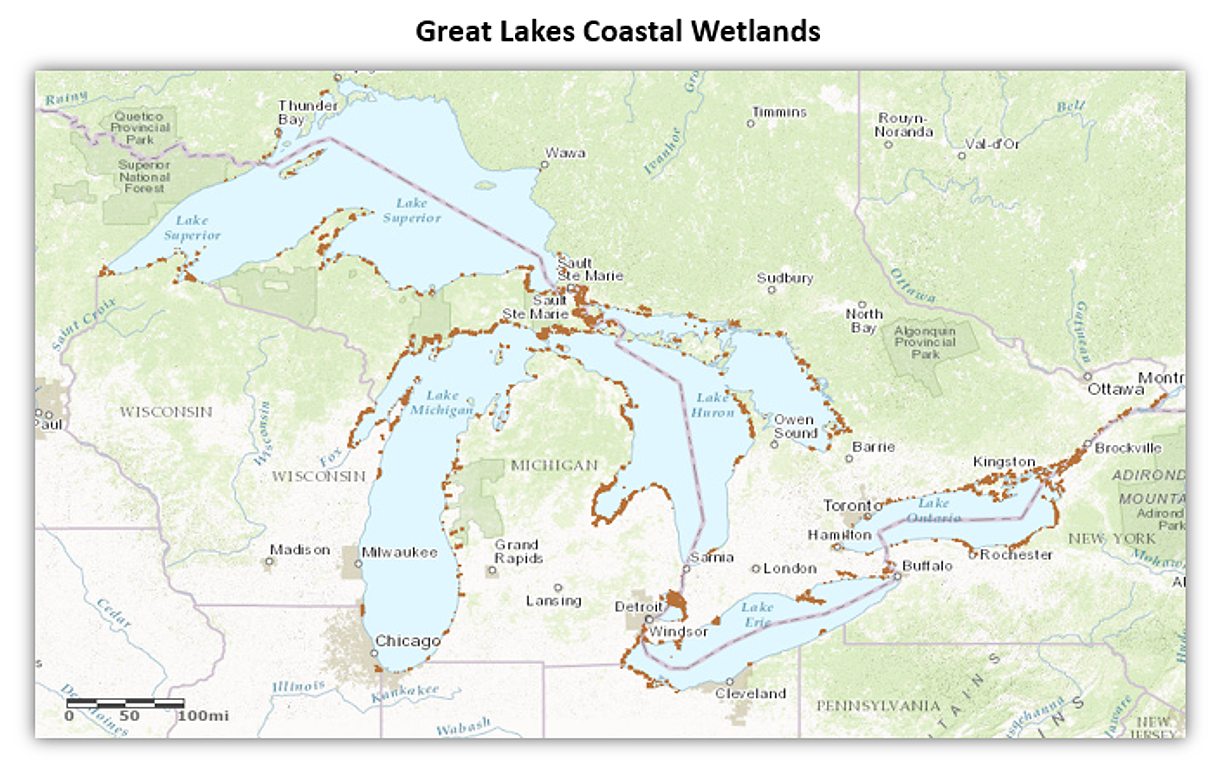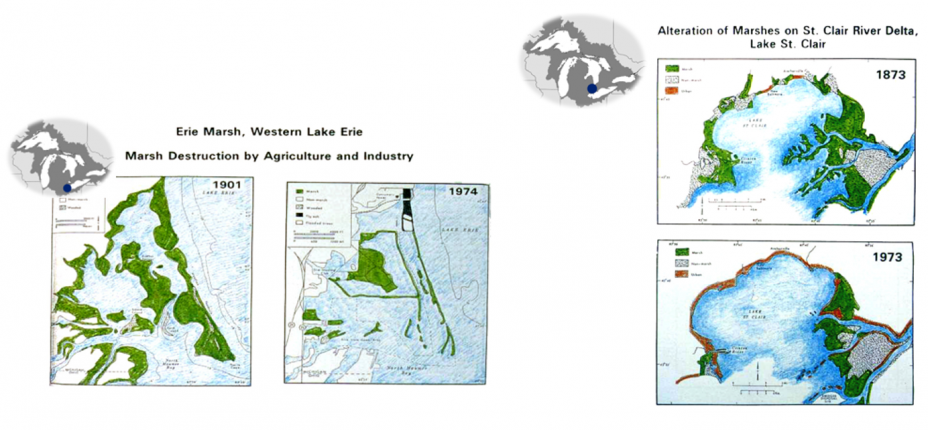Where are Great Lakes Coastal Wetlands?
Great Lakes coastal wetlands are defined as an area of wetland directly influenced by the waters of one of the Great Lakes or its connecting channels. Great Lakes coastal wetlands are found throughout the basin, along shorelines, in the mouths of tributaries, and along connecting channels (Figure 1). There are greater than 500,000 acres of coastal wetlands across the Great Lakes basin. Seventy percent of the Great Lakes coastal wetlands are located within the United States, of which 73% are in the state of Michigan.
 View large version of this picture.
View large version of this picture.
Figure 1: This map shows the distribution of coastal wetlands across the Great Lakes basin.Coastal wetlands experience many stressors relating to human development, fragmentation, drainage, point and non-point pollution, and invasive species. Today, less than 50% of historic Great Lakes coastal wetlands remain.[1] See Figure 2.
 View large version of this picture.
View large version of this picture.
Figure 2. Great Lakes Commission maps of Lake Erie and Lake St. Clair coastal wetland degradation over time. Original image developed by Albert, D. 2003.[2]The Great Lakes Coastal Wetland Restoration Assessment is conducting efforts to identify previous existing wetlands and their restorability. Increasing threats to Great Lakes coastal wetlands emphasize the need for protection and restoration.
References
[1] Krieger, K.A. et al. 1992. The Ecology of Invertebrates in Great Lakes Coastal Wetlands: Current Knowledge and Research Needs. Journal of Great Lakes Research Vol. 18, No. 4, p 634-650.
[2] Bourgeau-Chavez, L. L., R. D. Lopez, A. Trebitz, T. Hollenhorst, G. E. Host, B. Huberty, R. L. Gauthier, J. Hummer. 2008. Landscape-Based Indicators. Great Lakes Coastal Wetlands Monitoring Plan, edited by T. M. Burton, J. C. Brazner, J. J. H. Ciborowksi, G. P. Grabas, J. Hummer, J. Schneider, and D. G. Uzarski. Great Lakes Coastal Wetland Consortium, Great Lakes Commission.
Back to: About the Great Lakes Coastal Wetland Monitoring Program


